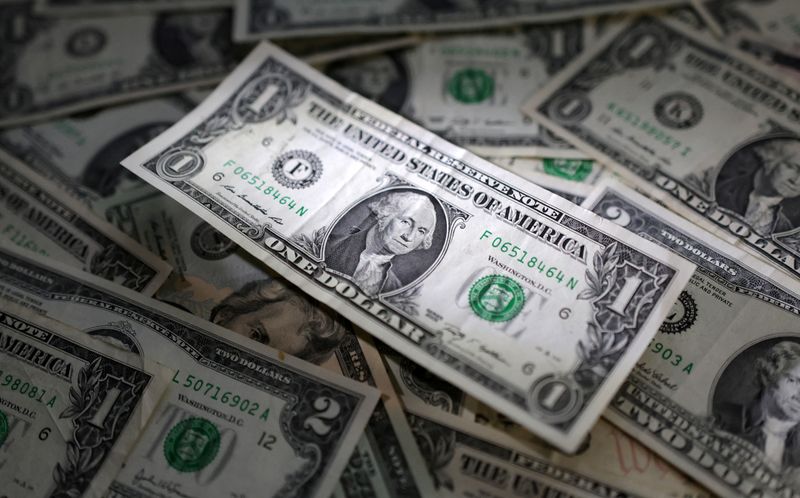Analysis-US regional bank deals rise as lenders aim to bolster balance sheets
2024.08.19 06:32
By Manya Saini and Niket Nishant
(Reuters) – Regional lenders at the heart of last year’s banking crisis are cutting more deals to shore up their balance sheets and compete with rivals, extending a wave of consolidation in the sector that may attract anti-trust scrutiny.
The banks, generally with assets between $10 billion and $100 billion, have struck 38 deals so far this year, compared with 29 during the same period last year, according to Dealogic data.
More than two-thirds of lenders in the KBW Regional Banking Index have a greater than 50% chance of being acquired over the next 12 months, according to a Reuters analysis of StarMine M&A data provided by LSEG. The model assigns target scores based on fundamentals, share price valuations and other factors.
The regional banking sector has come under immense pressure as elevated interest rates have dampened borrowing, increased competition for deposits and led to larger losses on commercial real estate loans, forcing banks to scale up and diversify, investors said.
“The regionals need to consolidate to compete more effectively,” said Macrae Sykes, banking portfolio manager at Gabelli Funds. “There are over 4,000 individual banks, many of which are not competitive in today’s landscape.”
Tie-ups lower banks’ cost of capital and allow acquirers to grow and diversify deposits, a key source of funding. Industry deposit costs have grown each of the last eight quarters as savers have sought out higher-yielding products, although costs now look to be peaking, Morningstar said this month.
SouthState’s acquisition of smaller rival Independent Bank Group (NASDAQ:) which will create a lender with $65 billion in assets is the biggest deal by assets this year. UMB Financial (NASDAQ:)’s takeover of Heartland Financial is close behind, creating a bank with $64.5 billion in assets.
UMB CEO Mariner Kemper (NYSE:) said in April that Heartland’s low-cost deposit base was attractive to the bank and that such deals would allow lenders to expand into new states and access more depositors.
With Treasury yields declining, banks that had delayed deals to avoid crystallizing losses on their securities holdings when yields were high are also expected to explore M&A.
Around 45% of paper losses banks had amassed on their securities holdings have been erased from their peak two years ago, Wells Fargo analyst Mike Mayo wrote in a report this month.
“As the interest rate and broader macro environment evolve, balance sheets will be able to more readily support M&A, which may lead to more activity,” said David Portilla, partner at law firm Davis Polk & Wardwell who advises on financial services M&A.
New York Community Bancorp (NYSE:), whose CRE troubles triggered a sector-wide selloff earlier this year, is the top takeover target among regional banks, according to Reuters’ Starmine data analysis, which assigned NYCB a score of 98.
The bank trades at a price-to-book ratio of about 0.48, according to LSEG data. A ratio below one typically indicates an undervalued stock.
NYCB was followed by Valley National, Hope Bancorp, Banc of California (NYSE:), Texas Capital Bancshares (NASDAQ:) and Fulton Financial (NASDAQ:), whose assets range from $17 billion to $62 billion and all trade at a price-to-book ratio of less than one.
“If there is going to be stress and possible attractive valuations, it is going to be down the food chain in terms of the size of the banks,” said Brian Mulberry, portfolio manager at Zacks Investment Management which holds several bank stocks.
Mulberry said that mid-sized lenders like Fifth Third and Huntington Bancshares (NASDAQ:) might have an appetite to snap up smaller rivals that would allow them to better compete with the likes of JPMorgan Chase (NYSE:), Bank of America and Wells Fargo.
The banks cited above either declined or did not respond to requests for comment.
REGULATORY HEADWINDS
While tie-ups should help shore up faltering smaller lenders, big deals are set to receive more scrutiny under new rules proposed by the Federal Deposit Insurance Corporation (FDIC) and the Office of the Comptroller of the Currency (OCC).
Bank regulators review how deals will affect competition, systemic risk, and the needs of affected communities, while in some cases the Justice Department advises on antitrust issues.
Both the OCC and FDIC this year proposed tougher merger policies, especially for deals that create banks with more than $50 billion in assets, to ensure the best mergers are approved and do not increase systemic risks.
In 2021, the Biden administration, which has taken a tough stance on mergers across the board, urged the Federal Reserve and Justice Department to update their bank M&A guidelines and increase deal oversight.
Bank deals have also drawn intense political scrutiny after regulators last year arranged the sale of failed First Republic Bank (OTC:) to JPMorgan and the sale of collapsed Signature Bank (OTC:) assets to NYCB. That merger pushed NYCB into a new regulatory category, contributing to its troubles.
Still, Portilla, who also advises on regulatory issues, said the agencies were cognizant of banks’ commercial pressures.
“The industry logic for banking sector consolidation is very strong and I think that is recognized by the regulators,” he said.

If Republican presidential candidate Donald Trump is re-elected in November, bank M&A scrutiny is also likely to ease. “I would anticipate a lighter regulatory touch,” said Jason Benowitz, senior portfolio manager at investment firm Segall Bryant & Hamill.
Spokespeople for Trump’s campaign did not respond to requests for comment.









